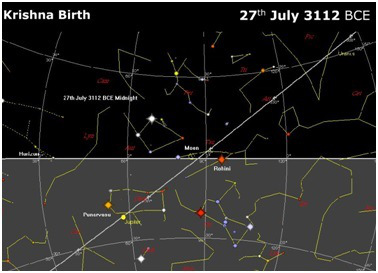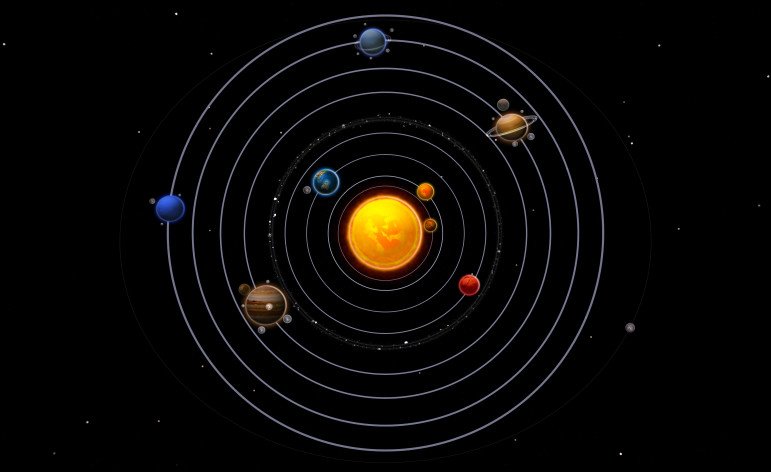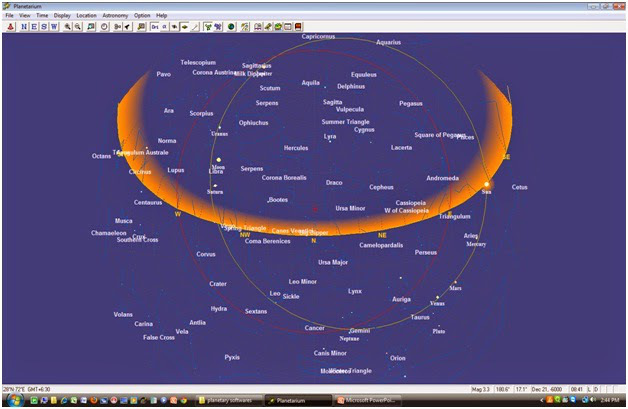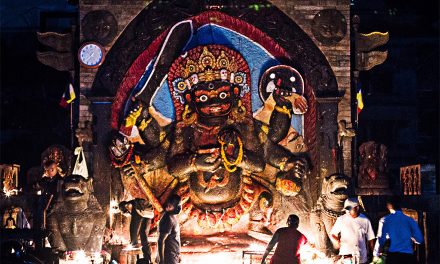Indian Puranas, History and The Epics are not fairy tales. They are facts. I have been verifying statements of events mentioned in these texts with the help of Astronomy, etymology of word used, archeological evidence, anthropology, geology and tools like carbon dating, Atomic verification, infra red evaluation, etc.
I have published posts on many events narrated in the Indian Texts. Now I am posting information on the appearance of the sky during,
[wp_ad_camp_1]
The Rig Vedic Period
1. Rama’s Birth,
2. Krishna’s Birth.
These maps have been arrived at running the references found in these instances through a Software designed to arrive at star positions and period..
Rig Vedic Period Sky Map.
There are 53 references in Rigveda as prayers offered to Aswinis at dawn. The description clearly points to the observation of the pair of stars in the Aries constellation (referred to as Aashvin or Asvini) just before sunrise as a ritual to mark the year beginning. Using Planetarium software, we find that the Winter Solstice occurred on 19 December, 7000 BC at 0735 hrs.
This is the earliest reference to Vedic calendar with year beginning at Winter Solstice, found in Rigveda (5-77-1/2; 1-46-14; 7-69-3/2). Heliacal rising of Ashwini Nakshatra (Aries) can be seen to occur on 5th January, 7000 BC, marking the year beginning.
A thousand years later, Winter Solstice no longer occurred near Aries (Asvini) due to precession. As a result, Ashwinis were no longer rising heliacally as before. They were still below the horizon at sunrise around Winter Solstice time. The Winter Solstice had moved to Revati by 6000 BC. Thus the precession of Equinoxes and Solistices was being observed by Rigvedic Scholars.
The Sky of 19th December, 6000 BC at sunrise on the Winter Solstice day shows that Ashvini gave way to bright star Chitra (α Vir) on opposite side (Western horizon). A full Moon in Chitra Nakshatra provided a new time marker in the sky and heralded the lunar month naming system-Chaitra, Vaisakha etc. (Rigveda: 5-74-1,2 and Tait Samh. 7-4-8).
Rama’s Birth, Sky Map.
Rama was born on the Navami tithi of Shukla Paksha of Chaitra masa(9th day of the increasing phase of the moon in the lunar month of Chaitra).At that time, the nakshatra was Punarvasu, and Sun, Mars, Saturn, Jupiter and Venus were in Aries, Capricorn, Libra, Cancer and Pisces respectively. Lagna was Cancer and Jupiter & Moon were shining together. — Ramayana 1.18.8,9.
1. Sun in Aries
2. Saturn in Libra
3. Jupiter in Cancer
4. Venus in Pisces
5. Mars in Capricorn
6. Lunar month of Chaitra
7. 9th day after New Moon (Navami Tithi, Shukla Paksh)
8. Moon near Punarvasu Nakshatra (Pollux star in Gemini constellation)
9. Cancer as Lagna (Cancer constellation rising in the east)
10. Jupiter above the horizon
The observations on the left, when entered into Planetarium software gives us the above Sky Chart, which in turns gives forth the below mentioned date.
Sri Rama Navami – 10th January 5114 BCE – Birth Day of Rama
Observation at 12.30 p.m.
Skymap During Krishna’s Birth.
Lord Krishna was born around midnight. That night was the eight phase of the moon known as Ashtami Tithi. The moon was near Vrshabha, the bull, i.e the Taurus constellation that houses the star Rohini. The star Rohini is known as Aldeberan in modern astronomy. The month was Shravana, one of the 12 months in the Indian calendar.
Shravana vada ashtami, Rohini Nakshtra, uditam Lagnam .Date of Krishna’s Birth By Gregorain Calendar. 27th July, 3112 BCE
 .Astronomical events repeat themselves at regular intervals.hence fixing one date is difficult. We are taking the last event for calculation. As time is Eternal and Cyclic, the events repeat themselves.
.Astronomical events repeat themselves at regular intervals.hence fixing one date is difficult. We are taking the last event for calculation. As time is Eternal and Cyclic, the events repeat themselves.
Source: ramanan50.wordpress.com
















thanks always forvaluable data on Hinduism.Am so blessed to learn still more and moe.Pllease keep me involved in such holy informative data.
But what is about 108″The Jap Mala has also 108 beads+ BUDDAH Statue in LOTUS?Where it is?Will wish to know,on this too.Be blessed.Loves Chandru G.Advani,Yokohama Japan
Astrology is based on star positions and hence people born in a particular star position share their nature etc. I am sure the star positions of Lord Rama and Lord Krishna HAVE been repeated over the thousands of years HOW COME we have never had such personalities ever born again?
While the calculation for Lord Krishna’s birth day is right the birth day of Lord Rama should be in treta yuga which is 8,64,000 years before the end of dvapara when Lord Krishna was born. Hare Krishna!
As the astronomical phenomena are cyclic and repeat (almost18000years)why shoul Krishna or Rama’s birthday are fixed to BC ? They could have been in the last ice age, hence we are unable to procure more evidences. See as per NASARiver Saraswathi (which non believers simply rediculed) vanished some 15000years ago. Which was there in Krishna’s time further recent explorations of Dwaraka was more than 7000years to 20000years hence can there be more proof? Similarly Ram sethu which is now under sea should be subjected to its age. When such an astro predictions and science was known obviously many people lived before Rama knew it.
Wonderful articles with great knowledge. I will like to help. Please let me know how
Indians and other ancient civilizations have been writing our own history for thousands of years! We do not need Western academia to jusify ourselves!
Thank you! Great Information but i agree with the first comment on Lord Rama’s Birthday.. that was in a different Yug… Not 3000 years before Krishna but a lot more than that.
@shyamananda Before 8 lakh years there were no human beings on this planet…Human beings evolved around 2 lakhs years ago…This puts in question the whole Yuga calculation according to Hindu almanacs.
According to Swami Sriyukteshwar Kali yuga is 1200 years..dwaraparayuga 2400 years..tretayuga 3600 years and Satyayuga 4800 years. Each yuga has ascending and descending versions.
Dear Ramesh V K,
If you don’t know then please do not bark, as you dont know anything about how much ancient Sanatan Dharma is and you are even giving wrong numbers of Yuga… Just use a little capacity of your mind if you have and think, if Kaliyug would be of 1200 years. And suppose we think that Kaliyuga starts from English Calender, then you are in Satyug already and I don’t think in Satyug there could be any people existing like you.